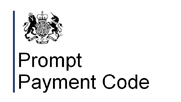Invasive Plant Species
The three non-native plants most commonly encountered in Britain that cause concern to homeowners, land owners and developers are: Japanese knotweed, Giant hogweed and Himalayan balsam Japanese knotweed (Fallopia japonica) has become increasingly well known in recent years, and is a growing problem because of the challenges it causes in the urban environment. The plant, which is native to eastern Asia, was introduced in the early 19th century to adorn the gardens of Victorian England. As early as the beginning of the 20th century it was widely recognised as an invasive species. Wherever the plant grows it can cause damage to buildings and paving. Developers and landlords often need to tackle the plant in order to avoid contravening the Wildlife and Countryside Act 1981. Homeowners who are selling their property may find they are asked by a solicitor to confirm that they do not have Japanese knotweed growing within 3 metres of a habitable space.
Thankfully, Japanese knotweed once identified can be treated with minimal impact. Its effective eradication is a job for professionals so it's vitally important for anyone who thinks they might have an outbreak to seek professional advice.
Residential Social Landlords
- Wealdens have been trusted with the responsibility of resolving knotweed problems for Housing Association clients for more than ten years. We possess the knowledge and experience to ensure your Japanese knotweed problems are dealt with correctly, in full adherence to legislation.
- We work throughout South East England providing a wide range of treatment and removal solutions for our clients. Partnering with us will reduce the likelihood of receiving claims from nearby property owners.
- By reacting quickly, our surveys and treatment plans will protect clients from unwarranted accusations; we can react within 24 hours when required.
- Good informative communication with affected parties will also quickly calm potential escalations. We can produce and distribute information notices, flyers, letters and more, on your behalf.
It's growing near our garden, what can I do?
- In the first instance draw your neighbour’s attention to the plant (they might not know anything about it). Ask them politely to take action to prevent the spread of the plant onto your property. Hopefully, a friendly chat is all that’s required, but diary the date and conversation. If the problem persists then a gentle reminder may help. If this doesn’t work, put your concerns in writing requesting a solution. If this fails, take professional advice.
- Hopefully, this will be all you need to do to see the plant dealt with, but you will need to monitor the situation and record any further communications or actions taken by your neighbour.
- If Japanese knotweed has spread to your property from a neighbouring property your neighbours treatment plan will usually include the treatment the plant in your property, that's because it originated from their property and is most likely the same plant. Proof may be required (our survey can assist).
- To stop Japanese Knotweed from spreading or to kill it, there are three regularly used procedures. These are can be used on their own or in combination - a) apply herbicide b) install a physical ground barrier c) by digging it up and removing. Each solution will incur various levels of cost although that is not the only factor to consider.
- It is important to consider the environmental impact of the treatment works caused by increasing resource usage. The impact on communities due to increased traffic and loss of habitat until native plants recolonise should also be considered.

Contact us for more information or a free consultation.









